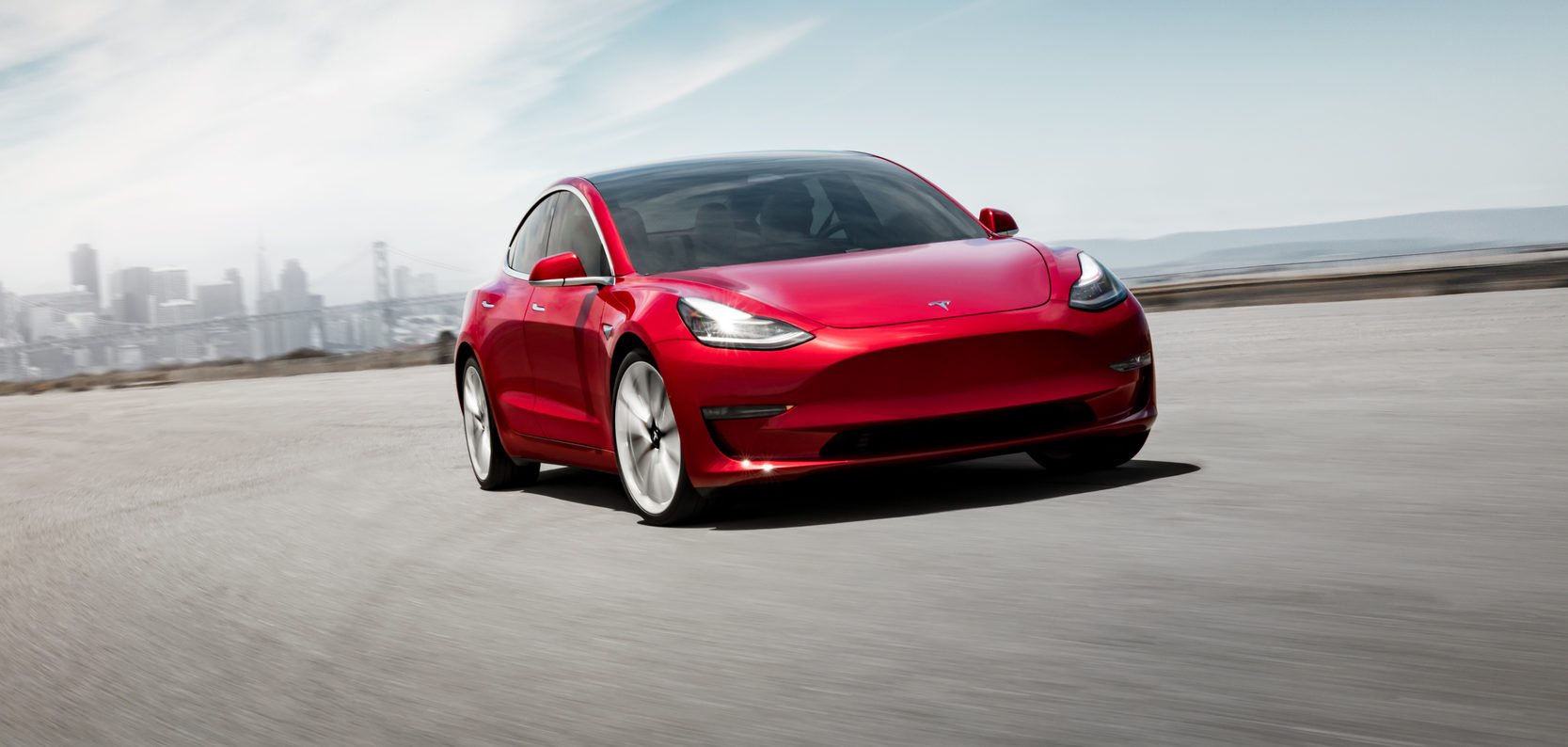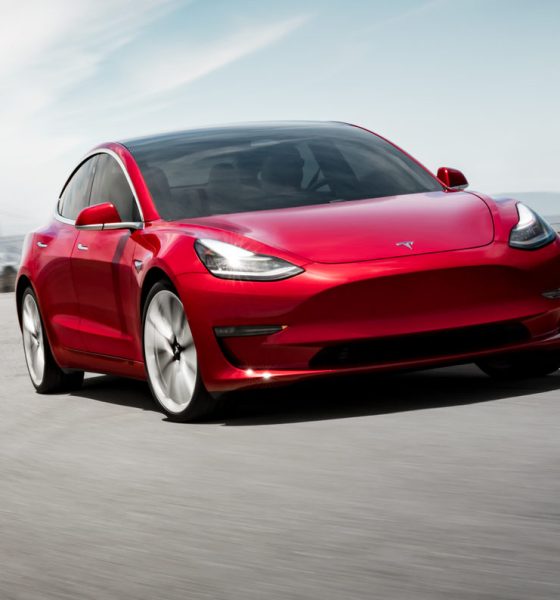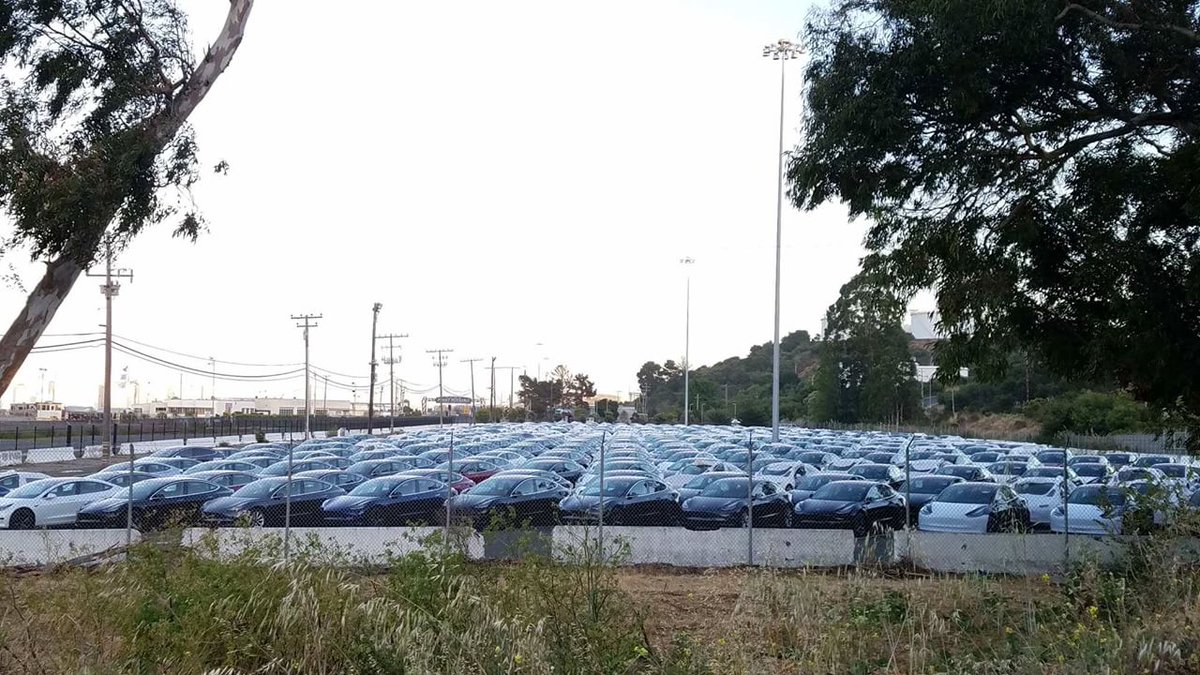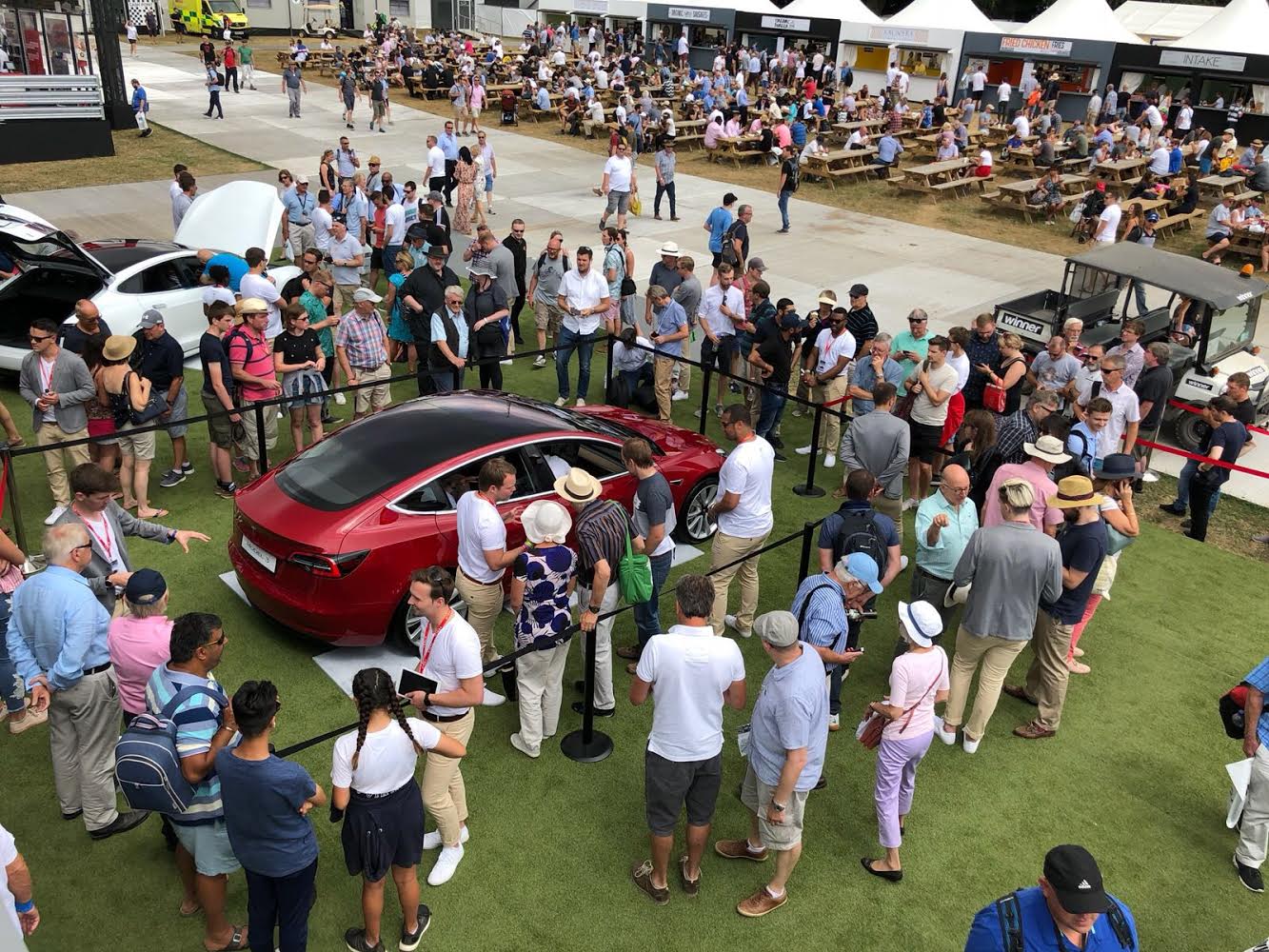

Investor's Corner
Tesla crushes short thesis on declining Model 3 demand
Tesla announced during its Q2 2018 earnings call that interest and demand for the Model 3 remains strong, particularly from customers who are not part of the company’s initial line of reservation holders. The update follows months of speculation that the rollout of the Model 3 has been anything but smooth. Since starting production of the electric car, Tesla has faced difficulty after difficulty, spurred by aggressive timelines announced by CEO Elon Musk and bottlenecks that emerged from its production lines. When the Model 3 was released, Elon Musk boldly declared that Tesla would aim to manufacture 5,000 of the vehicles per week by the end of 2017. That goal proved elusive until the end of Q2 2018, and only because Tesla adopted a “burst build” strategy.
While Tesla managed to hit its target of manufacturing 5,000 Model 3 per week at the end of Q2 2018, doubts from the company’s critics about the demand for the electric car emerged. As noted by Elon Musk during the recently held earnings call, Tesla actually sustained the Model 3’s 5,000/week production rate for multiple weeks in July. With the company producing more vehicles, Tesla began stockpiling more of the finished Model 3 in several lots such as the Burbank Airport while the cars waited for delivery.

Viewed by the company’s critics, the lots filled with vehicles were proof that demand for the Model 3 was declining, and that the cars indicated that customers were opting out of deliveries due to poor quality. Latrilife, a Tesla critic, even announced on Twitter that Tesla’s Burbank Airport lot is under 24/7 surveillance. Goldman Sachs analyst David Tamberrino also published a note recently stating that Model 3 demand appears to be waning based on social media activity around the electric car.
According to Tesla on its recently held earnings call, however, interest in the Model 3 is alive and well. While responding to a question from Toni Sacconaghi of Bernstein, Tesla worldwide head of sales Robin Ren stated the company now sees more orders for the AWD dual motor and Performance variants combined compared to the Long Range RWD Model 3. Perhaps even more importantly, Tesla has also been seeing interest in the Model 3 coming from individuals who are not part of the electric car’s list of reservation holders.
“Since we opened the configurator to the general public in early July, we have seen an increased demand coming from people who do not currently hold a reservation. This is something that we found super exciting. These are the people who have no idea about Model 3 and they heard about Model 3 is available to order. Many of them requested test drives.
“Since early July, we have over 60,000 test drive requests in the US alone. These people come into our stores, do the test drive, and they become super excited, and they decide to order the car. We believe the strong demand, especially from non-reservation holders, will continue as we increase production.”

Tesla also noted that Model 3 customers have been trading in vehicles that are not in the electric car’s segment. The Model 3 competes in the midsize luxury sedan market, but the Top 5 vehicles the electric car’s customers have been trading in are the Toyota Prius, BMW 3 Series, Honda Accord, Honda Civic, and the Nissan Leaf. These vehicles, save for the BMW 3 Series, are not luxury sedans at all. Instead, they belong to a more affordable segment in the mainstream auto market. This means that as Tesla produces more of the electric car, even customers who drive more affordable vehicles are considering the purchase of a Model 3, a car that is more expensive.
Part of this could be due, of course, due to Tesla’s promised $35,000 Standard Range RWD version of the Model 3, which is expected to start production in 6-9 months. At its entry-level price, the Model 3 has the potential to take a big chunk of the midsize sedan market, possibly even taking on mainstays such as the Toyota Camry. Even without its base model, however, the electric car is still a compelling purchase, considering that it is one of the only vehicles on the road that is set to get better over time, thanks to Tesla’s trademark over-the-air updates. And that, for some customers, is worth the extra investment.

Investor's Corner
Tesla stock closes at all-time high on heels of Robotaxi progress

Tesla stock (NASDAQ: TSLA) closed at an all-time high on Tuesday, jumping over 3 percent during the day and finishing at $489.88.
The price beats the previous record close, which was $479.86.
Shares have had a crazy year, dipping more than 40 percent from the start of the year. The stock then started to recover once again around late April, when its price started to climb back up from the low $200 level.
This week, Tesla started to climb toward its highest levels ever, as it was revealed on Sunday that the company was testing driverless Robotaxis in Austin. The spike in value pushed the company’s valuation to $1.63 trillion.
Tesla Robotaxi goes driverless as Musk confirms Safety Monitor removal testing
It is the seventh-most valuable company on the market currently, trailing Nvidia, Apple, Alphabet (Google), Microsoft, Amazon, and Meta.
Shares closed up $14.57 today, up over 3 percent.
The stock has gone through a lot this year, as previously mentioned. Shares tumbled in Q1 due to CEO Elon Musk’s involvement with the Department of Government Efficiency (DOGE), which pulled his attention away from his companies and left a major overhang on their valuations.
However, things started to rebound halfway through the year, and as the government started to phase out the $7,500 tax credit, demand spiked as consumers tried to take advantage of it.
Q3 deliveries were the highest in company history, and Tesla responded to the loss of the tax credit with the launch of the Model 3 and Model Y Standard.
Additionally, analysts have announced high expectations this week for the company on Wall Street as Robotaxi continues to be the focus. With autonomy within Tesla’s sights, things are moving in the direction of Robotaxi being a major catalyst for growth on the Street in the coming year.
Elon Musk
Tesla needs to come through on this one Robotaxi metric, analyst says
“We think the key focus from here will be how fast Tesla can scale driverless operations (including if Tesla’s approach to software/hardware allows it to scale significantly faster than competitors, as the company has argued), and on profitability.”

Tesla needs to come through on this one Robotaxi metric, Mark Delaney of Goldman Sachs says.
Tesla is in the process of rolling out its Robotaxi platform to areas outside of Austin and the California Bay Area. It has plans to launch in five additional cities, including Houston, Dallas, Miami, Las Vegas, and Phoenix.
However, the company’s expansion is not what the focus needs to be, according to Delaney. It’s the speed of deployment.
The analyst said:
“We think the key focus from here will be how fast Tesla can scale driverless operations (including if Tesla’s approach to software/hardware allows it to scale significantly faster than competitors, as the company has argued), and on profitability.”
Profitability will come as the Robotaxi fleet expands. Making that money will be dependent on when Tesla can initiate rides in more areas, giving more customers access to the program.
There are some additional things that the company needs to make happen ahead of the major Robotaxi expansion, one of those things is launching driverless rides in Austin, the first city in which it launched the program.
This week, Tesla started testing driverless Robotaxi rides in Austin, as two different Model Y units were spotted with no occupants, a huge step in the company’s plans for the ride-sharing platform.
Tesla Robotaxi goes driverless as Musk confirms Safety Monitor removal testing
CEO Elon Musk has been hoping to remove Safety Monitors from Robotaxis in Austin for several months, first mentioning the plan to have them out by the end of 2025 in September. He confirmed on Sunday that Tesla had officially removed vehicle occupants and started testing truly unsupervised rides.
Although Safety Monitors in Austin have been sitting in the passenger’s seat, they have still had the ability to override things in case of an emergency. After all, the ultimate goal was safety and avoiding any accidents or injuries.
Goldman Sachs reiterated its ‘Neutral’ rating and its $400 price target. Delaney said, “Tesla is making progress with its autonomous technology,” and recent developments make it evident that this is true.
Investor's Corner
Tesla gets bold Robotaxi prediction from Wall Street firm
Last week, Andrew Percoco took over Tesla analysis for Morgan Stanley from Adam Jonas, who covered the stock for years. Percoco seems to be less optimistic and bullish on Tesla shares, while still being fair and balanced in his analysis.

Tesla (NASDAQ: TSLA) received a bold Robotaxi prediction from Morgan Stanley, which anticipates a dramatic increase in the size of the company’s autonomous ride-hailing suite in the coming years.
Last week, Andrew Percoco took over Tesla analysis for Morgan Stanley from Adam Jonas, who covered the stock for years. Percoco seems to be less optimistic and bullish on Tesla shares, while still being fair and balanced in his analysis.
Percoco dug into the Robotaxi fleet and its expansion in the coming years in his latest note, released on Tuesday. The firm expects Tesla to increase the Robotaxi fleet size to 1,000 vehicles in 2026. However, that’s small-scale compared to what they expect from Tesla in a decade.
Tesla expands Robotaxi app access once again, this time on a global scale
By 2035, Morgan Stanley believes there will be one million Robotaxis on the road across multiple cities, a major jump and a considerable fleet size. We assume this means the fleet of vehicles Tesla will operate internally, and not including passenger-owned vehicles that could be added through software updates.
He also listed three specific catalysts that investors should pay attention to, as these will represent the company being on track to achieve its Robotaxi dreams:
- Opening Robotaxi to the public without a Safety Monitor. Timing is unclear, but it appears that Tesla is getting closer by the day.
- Improvement in safety metrics without the Safety Monitor. Tesla’s ability to improve its safety metrics as it scales miles driven without the Safety Monitor is imperative as it looks to scale in new states and cities in 2026.
- Cybercab start of production, targeted for April 2026. Tesla’s Cybercab is a purpose-built vehicle (no steering wheel or pedals, only two seats) that is expected to be produced through its state-of-the-art unboxed manufacturing process, offering further cost reductions and thus accelerating adoption over time.
Robotaxi stands to be one of Tesla’s most significant revenue contributors, especially as the company plans to continue expanding its ride-hailing service across the world in the coming years.
Its current deployment strategy is controlled and conservative to avoid any drastic and potentially program-ruining incidents.
So far, the program, which is active in Austin and the California Bay Area, has been widely successful.








